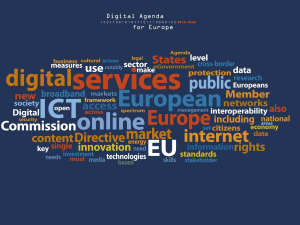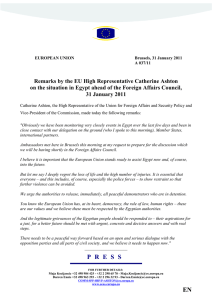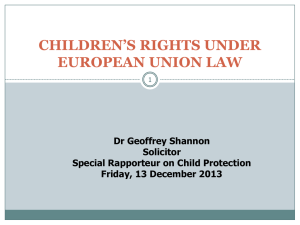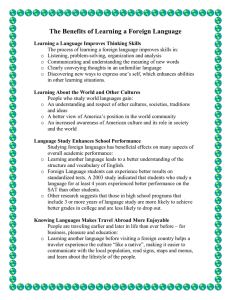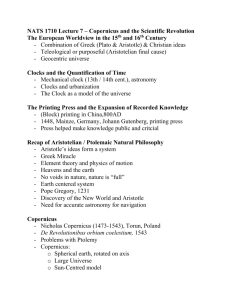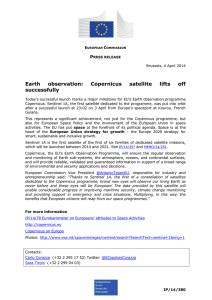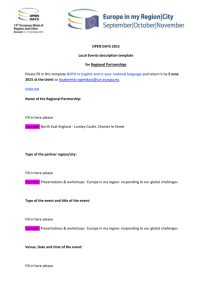Call Big Data (16 January 2015), Brussels
advertisement
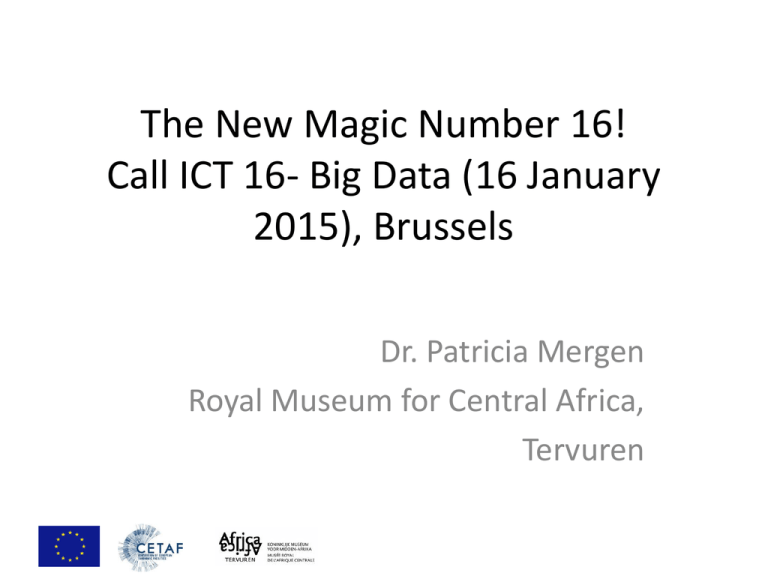
The New Magic Number 16! Call ICT 16- Big Data (16 January 2015), Brussels Dr. Patricia Mergen Royal Museum for Central Africa, Tervuren Call information - Horizon 2020 ICT-16 Big Data networking day https://ec.europa.eu/digital-agenda/en/news/horizon-2020-ict-16-big-datanetworking-day Plenary, 2 parallel networking sessions + Workshop on multilingual data value chains in the Digital Single Market ICT 16 Big Data Research http://ec.europa.eu/research/participants/portal/desktop/en/opportunities/h2020/to pics/9084-ict-16-2015.html a) Research and Innovation Actions (Collaborative Projects) – a1) and a2) b) Coordination and Support Actions in form of Prizes Budget a) 36 M€ b) 1 M€ Deadline: 14 April 2015, 17:00 Brussels time Definition of Big Data The volume of the data becomes an issue in itself and cannot be analyzed them by conventional methods. Challenges : Do Natural history and biodiversity data qualify ? (ie compared with astronomy or stock exchange volumes of data ?) What is meant by conventional methods ? Only Natural history content presented at the Info day was by Vizzuality What is expected ? Development and implementation : Private industry (large companies and SMEs) but want researcher to go to the private sectors to work together with them. Public sector ( use cases, adviser, end users) a1 Expectations : Real time or near real time answers, automatic treatments of the information to be delivered in a format expected by the end users (ie processed data in form of automated reports, graphs … ; a2 Benchmarking : rapid analysis and providing of results and decision making tools based on this quick and real time analysis of huge amounts of data, so that better decision making can be taken in our rapidly evolving world. Need verifiable performance (example http://sortbenchmark.org) for example can resolves several terabytes of data in one minute. Tested in real life with real data (no prototyping, nor tests with specifically generated data, need statistically significant tests with end-users, not just a few people in a lab. Emphasis on end-users and their expectations (special attention to non-IT literate users. Open Access and no duplication of efforts ! - All non confidential data and information have to in Open Access, but will respect privacy for industry (patents, fabrication secrets …) - Data usage and access rights have to be clearly agreed and stated at the proposal stage. Partners have to commit officially. Even in an accepted project, if one of the partners does not commit to make his data accessible to the project as stated in the proposal, the project can be stooped (happened in previous cases); - You have to clarify if you can use twitter, Facebook, social media data or not. Use the datasets of the EU public bodies sources (ie Corpenicus) www.copernicus.eu. You can use social media data, but they cannot be the center of the proposal. (this is not in the call text, was said at the meeting) Important to take it into account. The Copernicus data are also open to be used for commercial use, also Galileo data should become available to use. - Check also www.bigdatavalue.eu for guidelines for inspiration. Basis for future call. - Check FP7 Big Data projects that have been financed and are ongoing so to not duplicate work. Consortium and type of data expected Expect complex data, structure and unstructured. It must not be necessarily be from industry and scientific/public mix (not a requirements in the call text , but is highly recommended orally at the info day). Encourage to take into account all the aspects of the data with as much features as possible. Multilingual aspects are also important. Expect to have also linguistic variety. If the data is seen as very complex it can be accepted that it is less voluminous. But this is at the appreciation of the reviewers. Lets apply and try to have a project starting in 2016 !!!!
